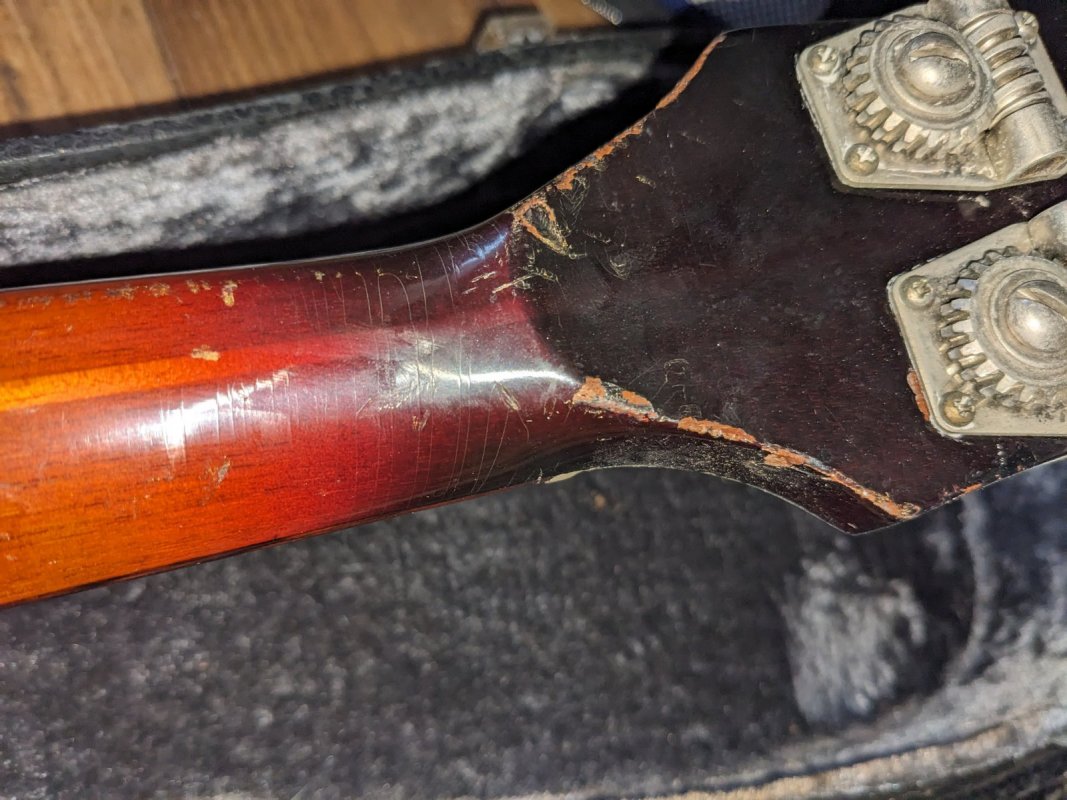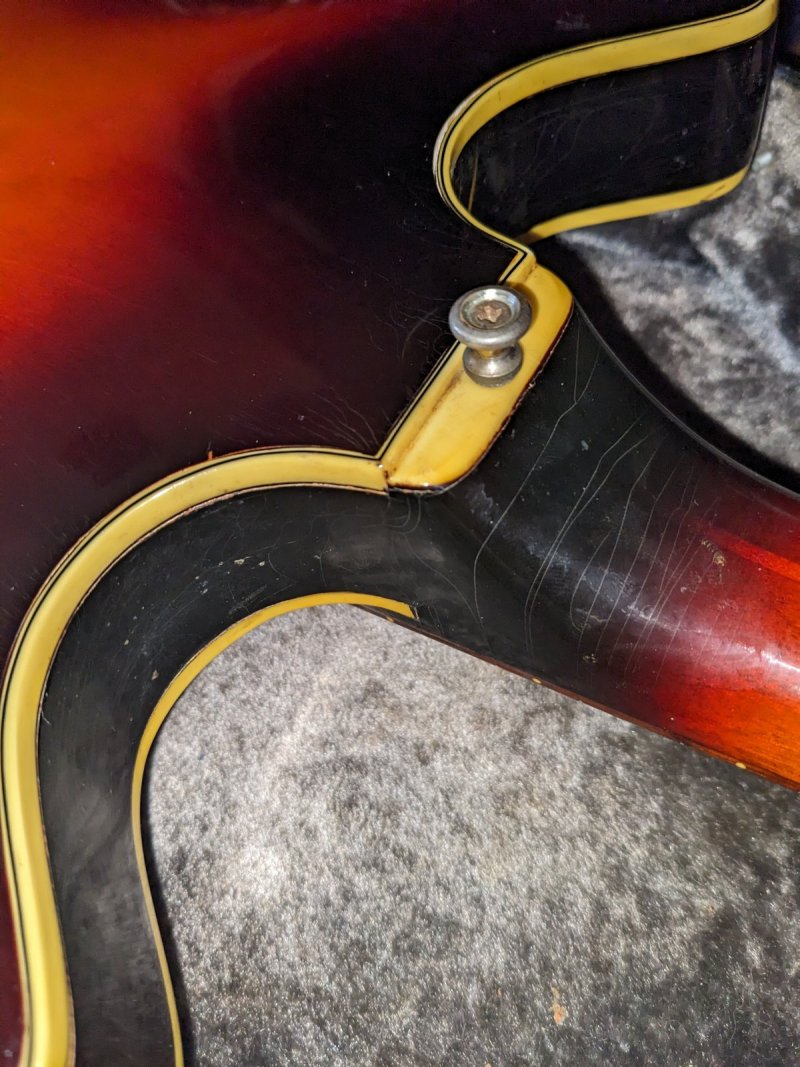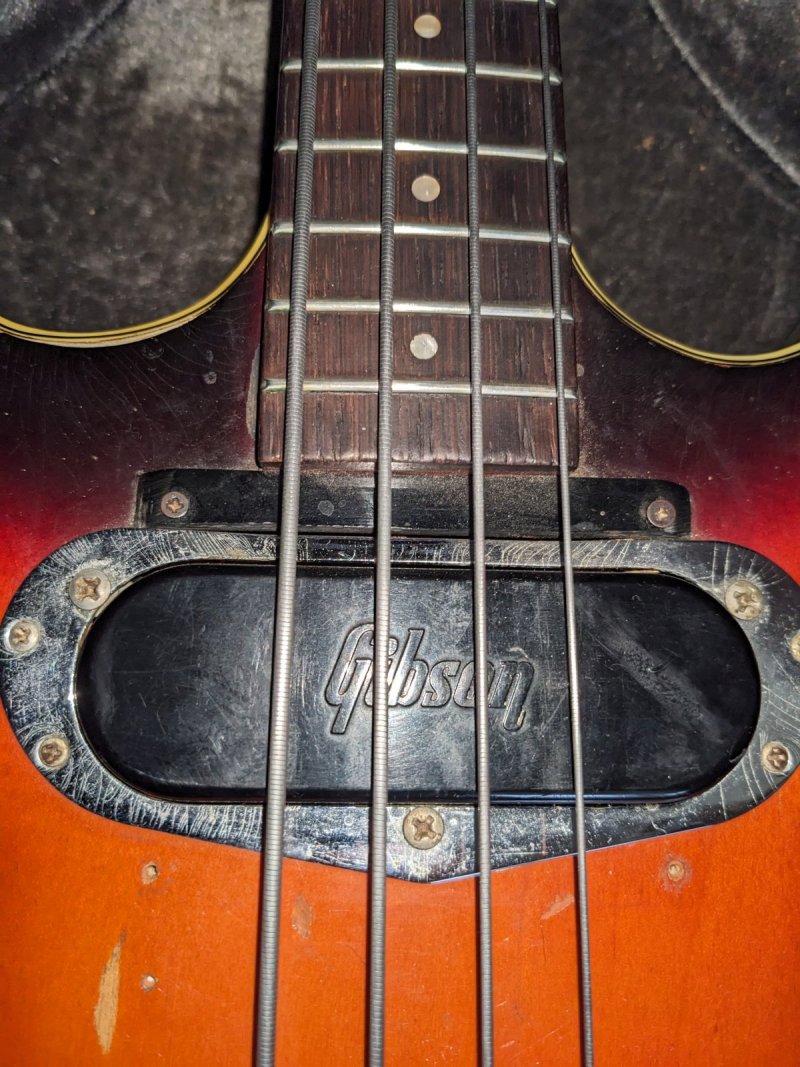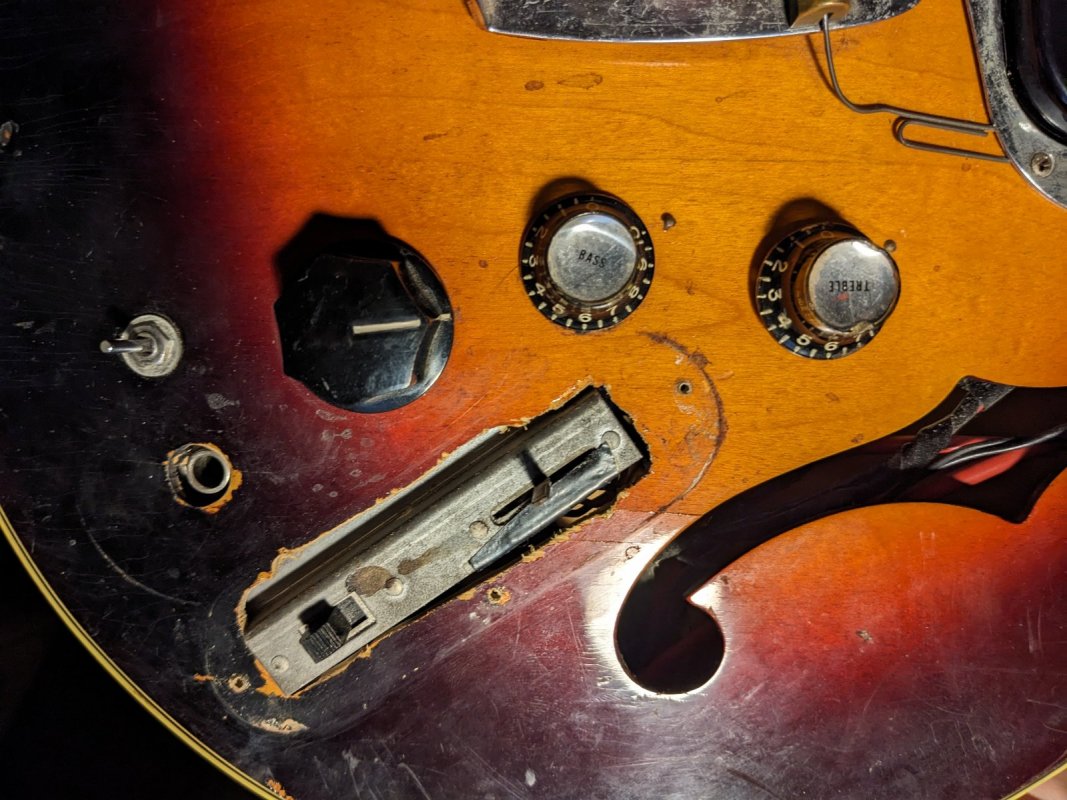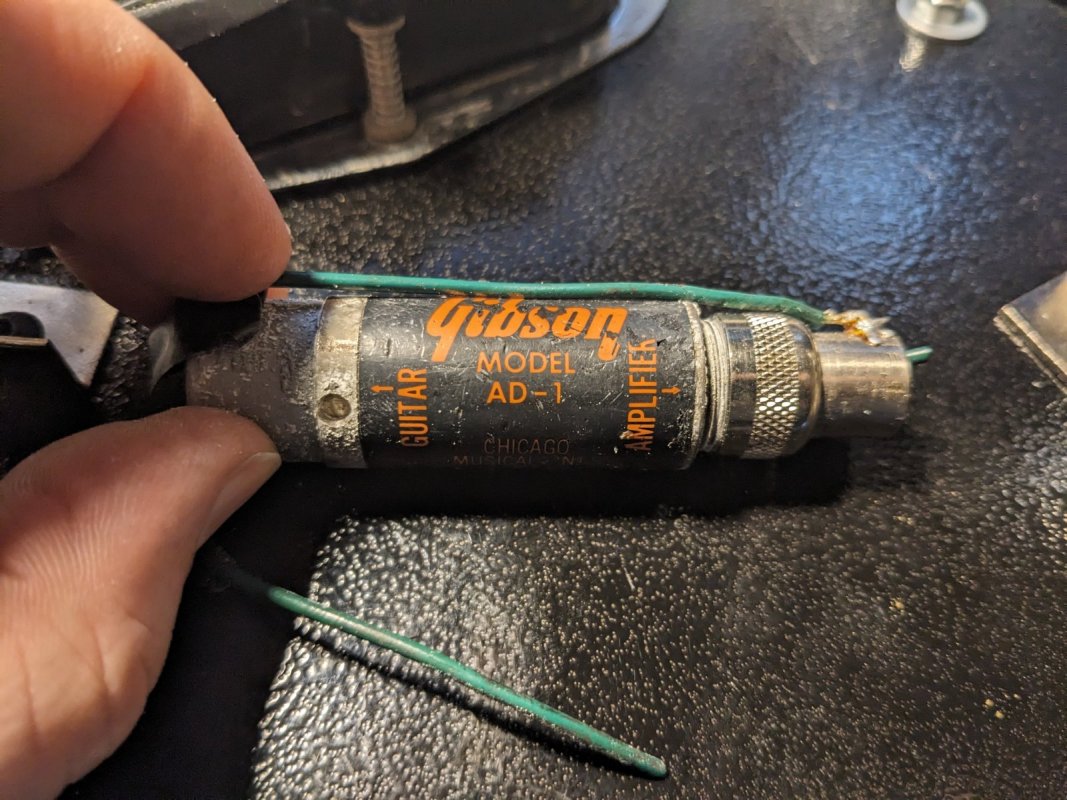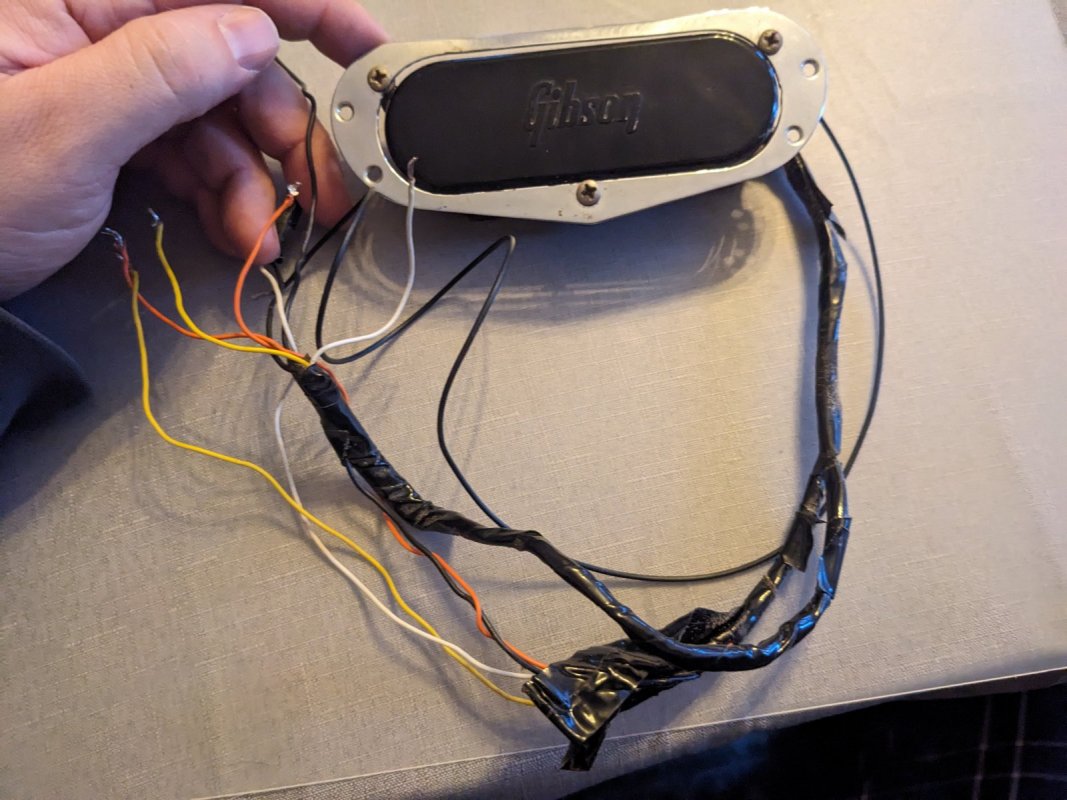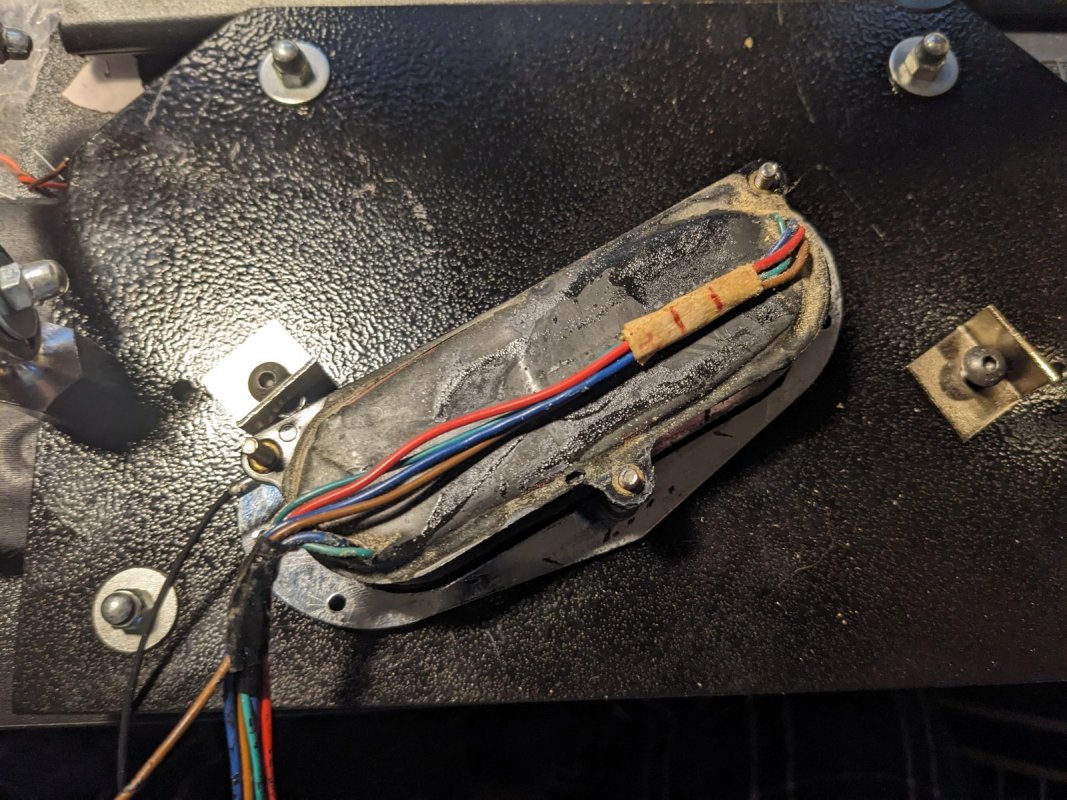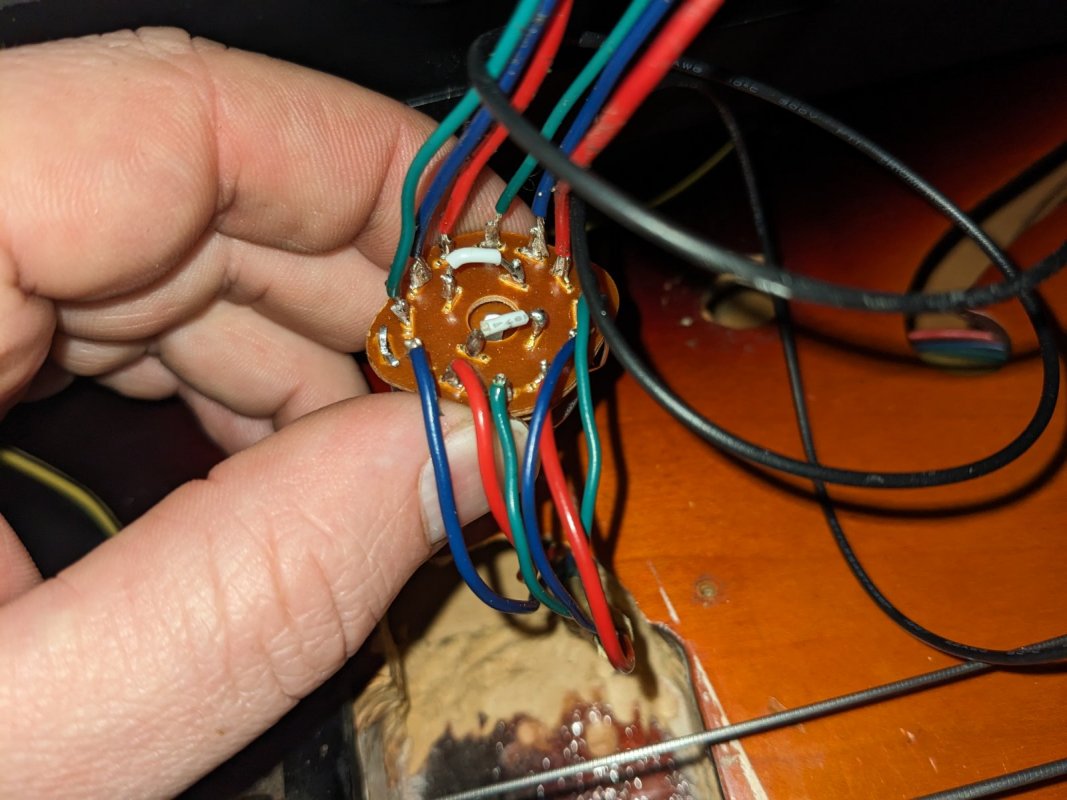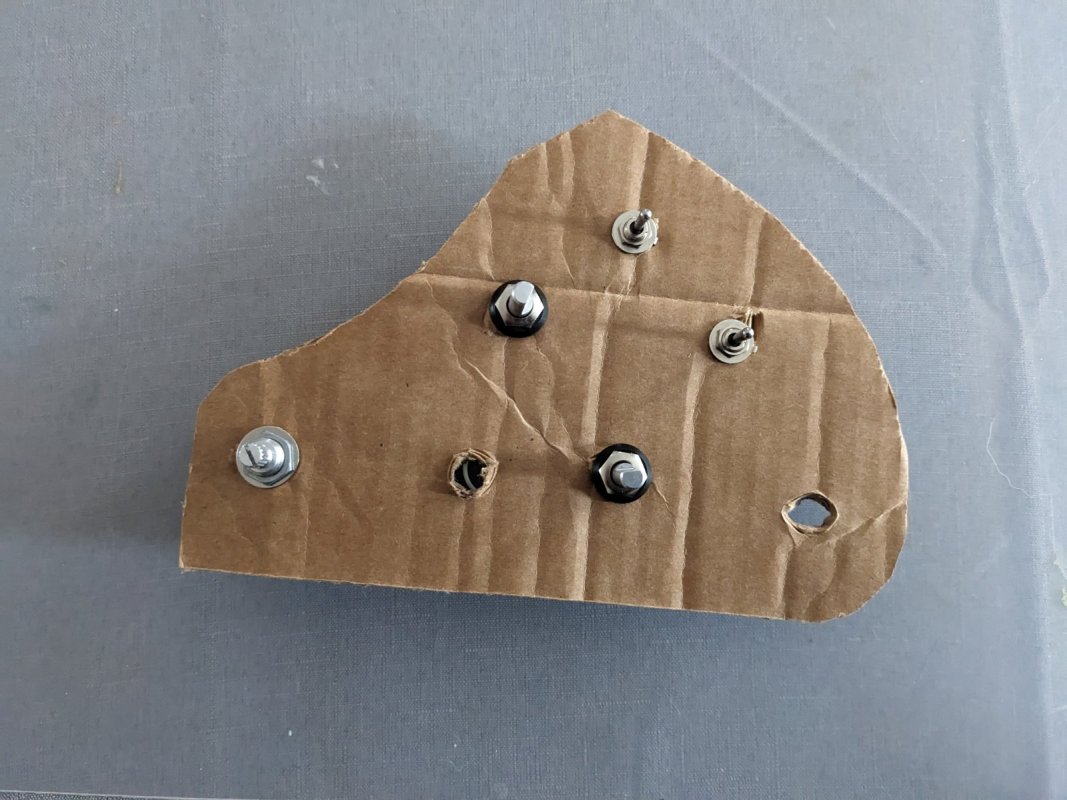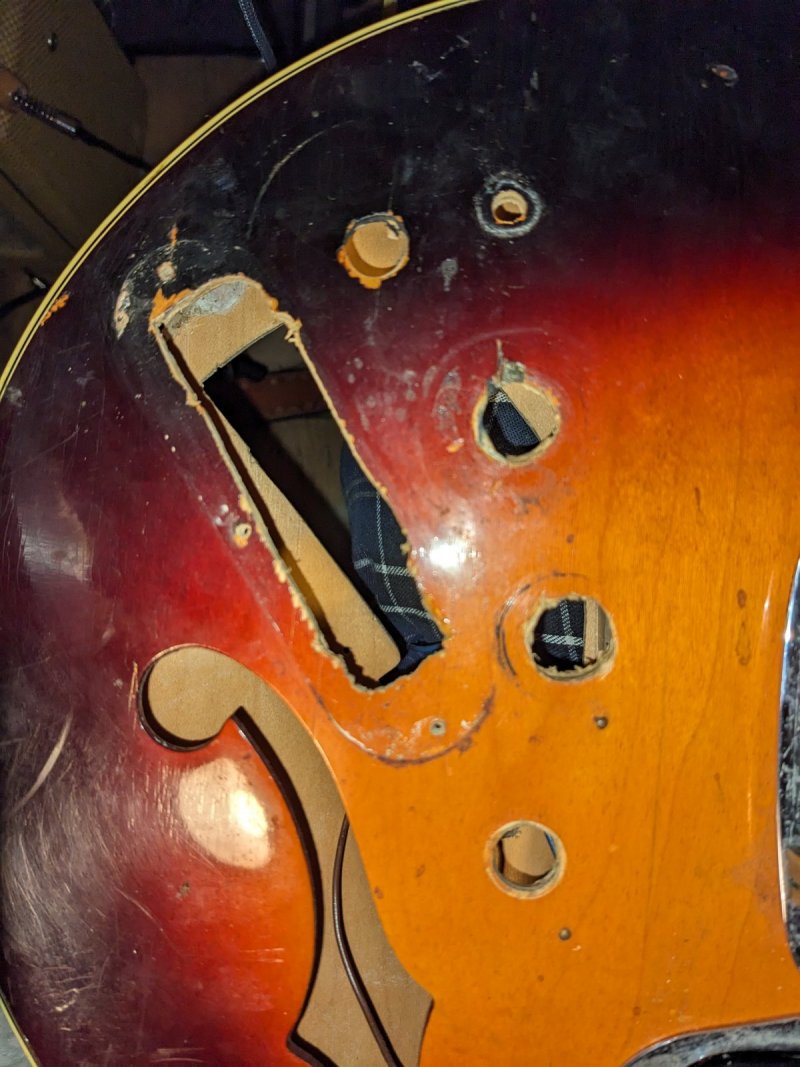I got this exact bass in trade last weekend from a guy who had clearly bitten off more than he bargained for. I'm pretty sure nothing has changed but the strings from that auction.
Thankfully the neck is nice and straight, the frets are fine, the truss rod works and the action is more than acceptable for me with room to move down.
Unfortunately the wiring is a total mess. The pots don't really work at all and the big switch seems to be wired backwards between the pickups since one gets hotter as the other gets thinner, regardless of where the phase switch is set. The better news is the pickups sound great when the signal is actually coming through. The original transformer is wired internally to that mini toggle but its just wrapped up in a plastic bag bouncing around.
Since it's clearly never going back to stock, I'm thinking a walnut control plate on top will hide some of the more creative drilling that was done. I have no idea what to do about the strange placement of that pickup switch though.
bless you. and welcome.
So far, you seem to be barking up the right tree. regarding the pickup switch, I would simply extend your walnut control plate to cover the entire treble side of that bass, similar to the Phil Lesh "Big Brown" Starfire:

as far as the pickups and electronics, i'm not sure how far you plan to go with this, but...even if those Gibson pickups sound pretty good, I would remove them and sell them (along with the other Gibson parts), to reinvest back into the bass, with some sort of Guild Bisonic-type pair of pickups replacing them (or Alembic pickups). Especially if you will have a Phil Lesh type control plate...go with the flow and make it as much of a tribute towards that type of design as you can (just stick with 2 pickups though, and your original bridge and headstock). You don't need to go too crazy, just make it look right and sound right. It looks like the top of the original neck pickup (the only original pickup) cavity is showing behind the Gibson neck pickup (as would be expected)- you don't want that. So I would plan on installing 2 Bisonics, the bridge cavity will need additional routing, and both cavities will need damage control work done on the sides, from the Gibson work.
all existing electronics/components/wiring should be pulled, none of it looks original, although the "transformer" you speak of maybe is, that is the dreaded "suck switch" if so, and should be extracted for sure.
If you are not going to go Alembic, the most obvious options are Curtis Novack BS/DS Bisonics- each Bisonic is switchable from Bisonic to Dark Star, typically with a pull pot. Everyone's first choice, but they come at a price. You could get them non-switchable, and have a Novak Bisonic in the neck and Dark Star in the bridge, and save $40 per pickup (last I checked), as well as save on the cost and "talent" of the wiring and installation. wait until black friday and save 20% on Novaks Bisonics (I *THINK* -check with Novak). However if you have the huge control plate, and 2 Novaks, it would make a lot of sense to make them both switchable at that point (unless you were also doing some other wild things, in combo with the Novaks, which would somehow preclude the BS/DS switchability... that
@mellowgerman should be along soon to suggest...)
If you just want to use the less expensive, non-switchable Guild reissue Bisonics (they are actually reissue Dark Stars), that come stock on current import Starfires (looks identical to vintage Bisonic and Novak, from the top- not the P-bass looking Guild Starfire pickup)...let me know as I have a pair of those from my 2014 GSR M-85-II, with less than 5 hours of use on them. You could always start with those, and upgrade to Novaks later- although I am not suggesting you do that, if you have the budget to hot rod it right now...but if you decide to, I will give you a great deal on those Guild pickups, especially considering the cause (and i'd make a donation to LTG)
How clean is the neck and headstock on this bass? That would largely dictate my level of investment on this, if it were me. Has the neck or headstock ever been broken/repaired? Good on you either way, for making it right.
